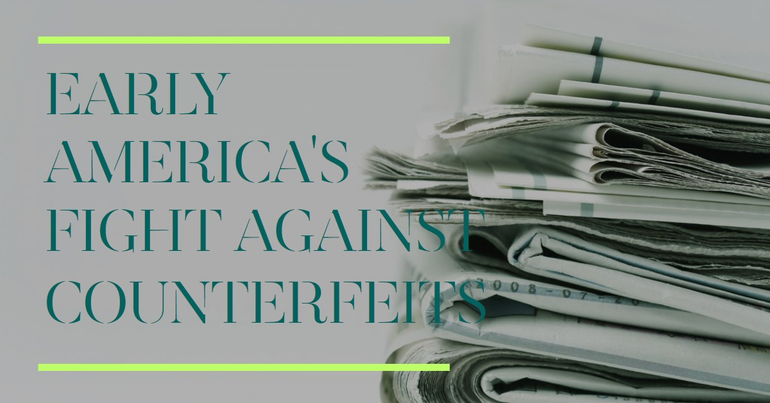The dawn of a new nation emerges from the shadows of conflict.
Imagine living in the early days of an emerging nation, where societal upheaval and an unstable currency system set the backdrop for daily life.
let's look back a major challenge faced by the United States centuries ago at its founding: the counterfeit currency problem, and how people addressed and resolved this issue.
The Early Struggles with Counterfeit Currency
The early United States grappled with the rampant issue of counterfeit currency, a situation that threatened to destabilize its budding economy. The core of this problem was the absence of a unified monetary system, which made it easier for fake notes to proliferate.
An illustrative example of this challenge was during the Revolutionary War when counterfeit British pounds were intentionally introduced by the British to disrupt the American economy. This early struggle underscored the urgent need for secure currency practices, leading to significant advancements in anti-counterfeiting measures. How British achieve this:
- Preparation and Distribution of Counterfeits: The British meticulously created and disseminated high-quality counterfeits of American paper money.
- Encouragement of Counterfeiting Activities: By incentivizing loyalists ('tories') and others inclined to deceive, the British effectively decentralized the counterfeiting operations, making it more difficult for American forces to control or counteract the spread of fake currency.
- Propaganda Campaigns: Perhaps the most insidious of the strategies was the dissemination of propaganda, which exaggerated the scope and success of the counterfeiting operations. This psychological tactic eroded confidence in the paper money even further, leading to a rapid depreciation in its value.
As a result, by 1779, the currency exchange rate plummeted to $40 of paper money for $1 of hard currency. By 1781, the cumulative $200,000,000 issued by the United States was rendered worthless, a financial blow from which it never recovered. The authorized paper money naturally depreciated due to its overabundance, but the British counterfeiting schemes expedited this depreciation, inflating prices and rendering the paper money unacceptable for transactions.
Benjamin Franklin: A Forefront Fighter Against Counterfeiting
Benjamin Franklin: A Forefront Fighter Against Counterfeiting Benjamin Franklin was a key figure in the early fight against counterfeit currency, employing a series of innovative techniques to enhance the security of colonial paper money. Here is a summary of his methods:
- Colored Threads: Franklin introduced colored silk threads into the paper, making it difficult for counterfeiters to accurately replicate the currency.
- Watermarks: He utilized watermarks, a subtle feature that added another layer of complexity for those attempting to produce counterfeit notes.
- Nature Printing: Franklin was a pioneer in using nature printing, a technique that transferred the detailed texture patterns of tree leaves onto the printing plate, resulting in designs that were extremely hard for forgers to copy. Special Inclusions: Research has shown that Franklin favored adding watermarks, tiny indigo-dyed threads, and special crystal "fillers" to the currency, complicating the counterfeiting process.
- Graphite-based Ink: A team from the University of Notre Dame discovered that Franklin developed his own graphite-based ink, unlike his competitors who used bone-black ink made from animal bones charred at high temperatures in a kiln with limited oxygen flow.
Legislative Measures to Combat Counterfeiting
The Crimes Act of 1790 was a pivotal piece of legislation that played a crucial role in shaping early American federal law, specifically targeting the pressing issue of counterfeiting. By prescribing the death penalty for those involved in the creation, alteration, or distribution of counterfeit public securities of the United States, the Act underscored the severity with which the young government viewed the threat of counterfeiting to the nation's economic stability and public trust. This act, regarded as a quasi-constitutional measure, demonstrated the federal government's early commitment to protecting the integrity of its financial systems and establishing a strong legal framework to combat financial fraud.
Modern Solutions to Counterfeit Money Challenges
In today's society, the technology for creating counterfeit money has reached unprecedented levels. With high-precision printing equipment and advanced materials, counterfeiters are able to produce fake notes that are increasingly difficult to distinguish from the real ones. In this never-ending battle against counterfeiters, every era has its legends like Benjamin Franklin, who introduced complex printing technologies and unique designs to combat fake currency. Similarly, today we have companies like Ribao Technology, which focus on developing advanced cash handling equipment. These devices not only effectively detect counterfeit bills but also enhance the efficiency and accuracy of cash processing, providing an additional layer of security for commercial transactions.
The modern solutions provided by companies like Ribao Technology have significantly improved the way businesses and banks protect against counterfeit money. Utilizing the latest technological advancements, such as infrared detection, magnetic testing, and ultraviolet scanning, these systems ensure the identification and rejection of counterfeit bills. This not only helps banks and businesses reduce losses from accepting counterfeit currency but also strengthens consumer confidence, ensuring the safety of their transactions.







